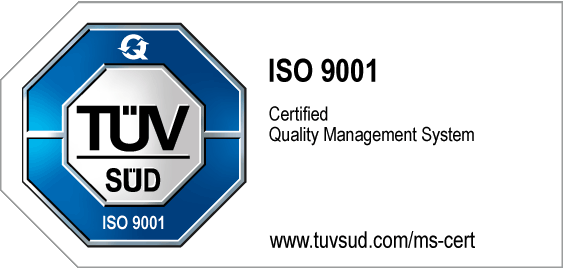Future Workbench: Developing Sustainable Solutions to Problems Together
The Future Workbench is a participatory foresight method developed by Robert Jungk, aimed at collaboratively creating visions and solution approaches for future challenges. In a structured workshop, different perspectives are brought together to gain deeper insights into possible future scenarios through creative techniques such as brainstorming and scenario building. The goal of the method is to generate innovative ideas and develop recommendations for shaping the future.
Future Workbench – At a Glance
| Objective: | Future Workbenches aim to develop forward-looking ideas through the active involvement of all participants. |
| Structured Phases: | The process comprises several stages, from preparation and idea generation to the implementation and realization phase. |
| Diverse Areas of Application: | The method is used in fields such as organizational development, urban planning, and education to collaboratively create visions for the future and strategic solutions. |
| Participation and Creativity: | A Future Workbench fosters stakeholder engagement and the use of creative processes for problem-solving. |
Phases of a Future Workbench
The process is always divided into several phases, allowing participants to thoroughly engage with a given topic. The aim is to develop forward-looking ideas.
The structured model promotes active participation and leverages the diverse perspectives and expertise of the participants to design feasible and creative strategies. Typically, Future Workbenches follow these phases to progress from understanding the problem to concrete action planning.
Preparation Phase
In this phase, the core topics and desired objectives are defined. Participants are carefully selected from different fields relevant to the topic. The detailed event plan is created, and necessary resources—such as appropriate venues and materials—are organized.
Critique Phase
With the themes and goals set, this phase focuses on identifying relevant issues or problems to address. This may be done through analyzing the current situation (e.g., a specific problem), discussions, or surveys.
Imagination Phase & Creative Idea Generation
Participants contribute their ideas and perspectives to develop solutions for the identified problems. Creative methods such as brainstorming, mind mapping, or group discussions are often used.
Implementation Phase
The collected ideas are turned into concrete visions for the future, and various scenarios are developed that outline different pathways for making these visions a reality.
Follow-Up and Realization Phase
The most promising ideas and scenarios are selected and further developed. Specific actions and steps are defined to bring the visions to life.
The Future Workbench concludes with a summary of results and recommendations for action, along with an outlook on how the developed ideas and strategies can be pursued further.
Areas of Application
The Future Workbench is applied in different contexts to collaboratively create visions for the future and devise solutions to complex challenges. Examples include:
- Organizational Development: Companies use Future Workbenches to work with employees in developing future scenarios and strategies for growth.
- Urban Development: Municipalities and urban planners involve citizens in shaping visions for the city’s future.
- Education: Schools and universities encourage students to reflect on their future, develop creative ideas, and take responsibility for their own learning and actions.
- Societal Challenges: NGOs and social initiatives use the method to work with stakeholders on solutions for issues such as environmental protection, social justice, or healthcare.
In all these applications, the method serves to integrate the knowledge, creativity, and perspectives of various stakeholders to contribute to a holistic and sustainable future.
Goals, Benefits, and Impacts of the Method
Future Workbenches combine the knowledge and creativity of participants to generate visions and identify strategic pathways for their implementation. In the following sections, we explain the specific goals, the various benefits for people, and the impacts of this method.
Goals
- Promoting Participation: Enable active involvement of diverse stakeholders in developing visions and solutions.
- Creative Idea Development: Generate innovative ideas for tackling future challenges through creative and interactive techniques.
- Joint Strategy Development: Support participants in collaboratively creating strategies and recommendations for implementation.
Benefits
- Diverse Perspectives: Incorporating different stakeholder viewpoints leads to more comprehensive and realistic visions.
- Participation and Acceptance: Involvement in decision-making increases acceptance and feasibility of strategies.
- Creativity and Innovation: Encourages thinking beyond conventional approaches.
Impacts
- Empowerment: Participants feel empowered to take responsibility for implementing the developed ideas.
- Networking and Collaboration: Strengthens connections and cooperation among participants.
- Change Impulses: Can trigger positive developments in organizations, communities, or society.
The Future Workbench in Companies
Within companies, the Future Workbench is a participatory approach that brings together employees from different levels and departments to develop visions for the future and strategies for long-term growth. By fostering creativity and collaboration, it unlocks innovation potential, boosts motivation, and aligns efforts to address future challenges.
Step-by-Step Guide for Successful Implementation:
- Preparation and Planning: Define the central theme and goals, choose a suitable time and venue, invite relevant stakeholders, and prepare necessary resources.
- Kick-Off and Idea Generation: Start with a clear outline of objectives and process; use creative tools such as brainstorming or mind mapping.
- Moderation and Discussion: Ensure all voices are heard and maintain an open, respectful atmosphere.
- Analysis and Documentation: Record ideas, summarize key findings, and share results with participants.
- Follow-Up and Evaluation: Create an action plan with clear responsibilities, gather feedback, and refine future workshops accordingly.
Practical Example
In a fictional mid-sized tech company called InnovateTech, a Future Workbench was held to develop visions for the company’s future and strengthen competitiveness.
- Preparation: Management identified the need for innovation, formed a multidisciplinary planning team, defined the theme “Innovation and Growth in a Digitalized World,” and invited relevant stakeholders.
- Execution: The workshop took place off-site to encourage creativity, using brainstorming, design thinking, and scenario planning.
- Analysis: Facilitators documented ideas, identified trends, and selected the most promising strategies to include in an action plan.
- Follow-Up: An interdisciplinary implementation team prioritized and executed measures, with regular progress reviews.
- Evaluation: Success was measured through feedback and results, leading to the Future Workbench becoming a recurring practice that fostered a culture of innovation and collaboration.
Frequently asked questions and answers
The Future Workbench method, developed by Robert Jungk, is a participatory approach to futures research. It enables groups to design visions and creative solutions for upcoming challenges. This method uses creative techniques to encourage in-depth engagement with possible future scenarios and actively involves diverse stakeholders in discussion and vision creation. Its aim is not only to generate ideas but also to promote broad participation and a sense of responsibility.
In einer Zukunftswerkstatt kommen Teilnehmer zusammen, um durch kreative Ideenfindung und interaktive Diskussionen gemeinsam Zukunftsvisionen zu entwickeln und Strategien zur Umsetzung zu erarbeiten.
In a Future Workbench, participants come together to develop visions for the future and create strategies for implementation through creative idea generation and interactive discussions.
The process typically consists of the following phases:
Preparation Phase: Define topics and goals, select participants, and plan the event schedule.
Critique Phase: Identify relevant problems and challenges through analysis and discussion.
Imagination Phase & Creative Idea Generation: Develop innovative solutions using creative techniques such as brainstorming.
Implementation Phase: Shape visions and scenarios from the collected ideas.
Follow-Up and Realization Phase: Select the best ideas and translate them into concrete measures and action steps.
The method developed by futures researcher Robert Jungk, the Future Workbench, is designed to collaboratively develop future scenarios and create creative solutions for complex challenges. It is a problem-solving approach that promotes the participation of various stakeholders and enables a holistic view of future developments, helping to actively prepare for change.
The duration of Future Workbenches can vary, but they typically range from half a day to several days, depending on the complexity of the topic and the number of participants. It is important to allow sufficient time for creative idea generation, discussions, and the development of solution approaches.
Sources
- Appel, A. (2023). Zukunftswerkstatt. In: Nöthen, E., Schreiber, V. (eds) Transformative Geographische Bildung. Springer Spektrum, Berlin, Heidelberg. https://doi.org/10.1007/978-3-662-66482-7_55
- Sellnow, R. (1998). Die Methode der Zukunftswerkstatt. In: Braczyk, HJ., Kerst, C., Seltz, R. (eds) Kreativität als Chance für den Standort Deutschland. Kreativität als Chance für den Standort Deutschland. Springer, Berlin, Heidelberg. https://doi.org/10.1007/978-3-642-60292-4_19


